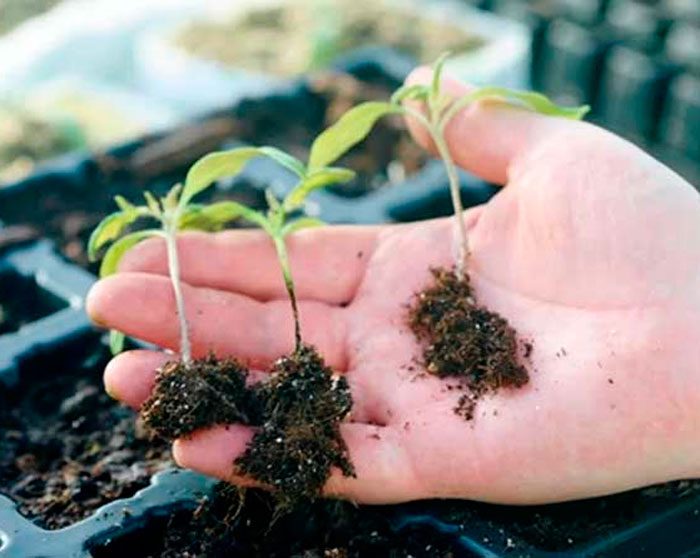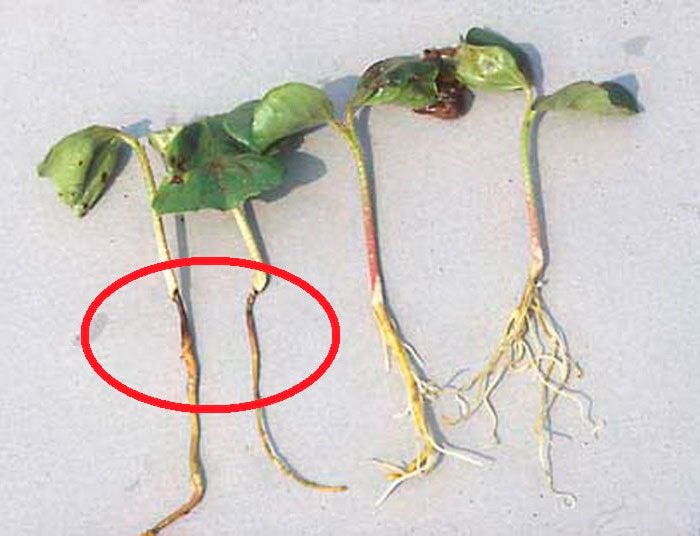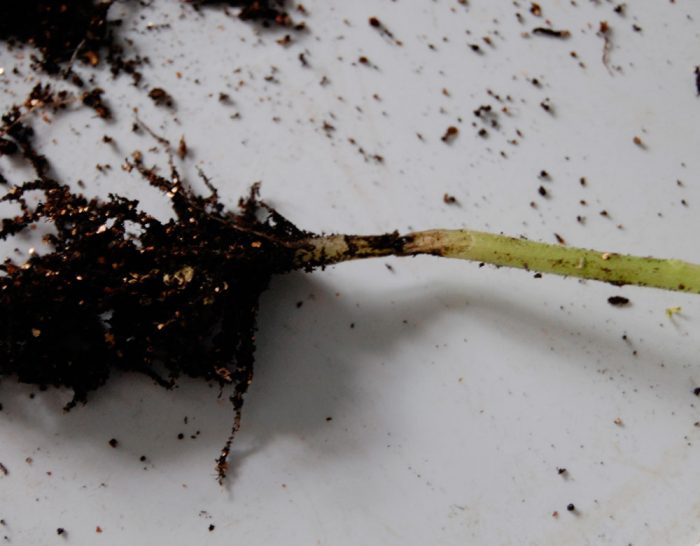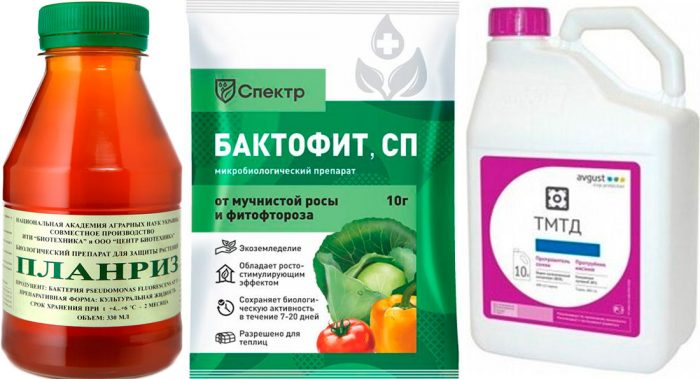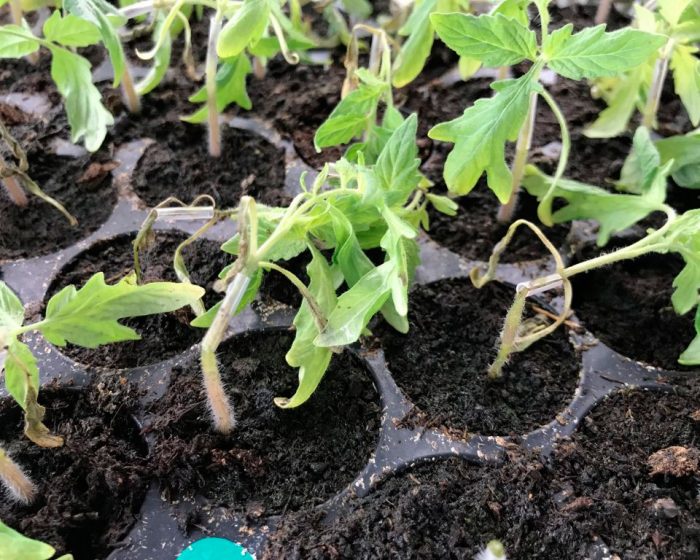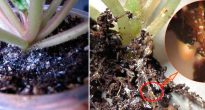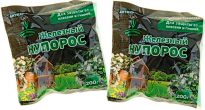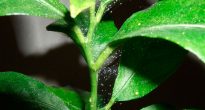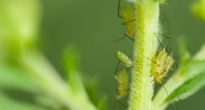The beginning of the season for gardeners falls on February or March, it is at this time that the sowing of vegetable plants for seedlings begins. This period is very important, because it is at this time that the laying of the future harvest of peppers, cabbage, eggplants, tomatoes and cucumbers takes place. If you are guided by many years of experience in growing seedlings and using high-quality seeds for sowing, then it may seem that nothing will happen to young plants. But experienced gardeners know that until the seedlings are planted in open ground, they must be carefully monitored, since at any moment they can be hit by a black leg, which can destroy the plant.
Content
Features of the disease
Many novice gardeners do not know what the black leg disease is and what are the consequences of damaging seedlings to it? Blackleg is a fungal disease, a genus of rot. The causative agents of this disease can be found on any seed material and in any soil. Most often, cabbage seedlings are affected by a black leg, and pepper and tomato seedlings are also often affected by it.
The name "black leg" is associated with the symptoms of this disease: after pathogenic bacteria are activated in conditions of high humidity, the plants first experience darkening of the hypocotal knee, and then softening of the stem tissues in the area of the root collar. As a result, the seedlings die. In order for the disease not to destroy all the plants, they must be thoroughly examined every day. As soon as the first signs of damage to the seedlings with a black leg are noticed, it is necessary to start fighting it as soon as possible.
Blackfoot fight
Most experienced gardeners know that it is better to prevent the seedlings from being damaged by a black leg than to try to save it later. Despite the fact that preventive measures in the fight against this dangerous disease are very simple, they are distinguished by their high efficiency:
- For sowing seeds, it is recommended to use a thoroughly disinfected soil mixture or garden soil.... Any soil during the winter period should be thoroughly frozen, and immediately before sowing seeds, it is calcined in an oven or spilled with a pinkish solution of manganese potassium. If you decide to use a ready-made earthen mixture purchased from a store for sowing seeds, then it still needs to be disinfected. The acidity of the soil mixture is also very important for growing seedlings and it is better if it is neutral.Most vegetable crops react extremely negatively to an acidic substrate and therefore are often affected by various diseases. In order to neutralize acidity, wood ash or dolomite flour is added to the soil mixture, and in order to prevent blackleg, Trichodermin is added to it. Seed material must be subjected to pre-sowing preparation, for this it is treated with a solution of such agents as: Planriz, TMTD, Baktofit, Fitoflavin-300 or Fitosporin.
- Try to avoid over-sowing seeds... Better to take the time and carefully spread the seeds, keeping the required distance, but then you will not worry if the seedlings will die from the black leg or not.
- The substrate in the container should be constantly slightly damp, for this, watering is rarely carried out, but they should be quite abundant. In this case, the soil mixture inside will be wet for a long time, and its surface can dry well before the next watering.
- Loosely loosen the surface of the soil mixture near the plants, which will help prevent dryness. If the substrate dries up, the root system of the plants will not be able to breathe normally. In order to prevent overdrying of the upper layer of the substrate, cover its surface with sand, this will also help prevent moisture retention near the root collar of the seedlings.
- The active development of pathogenic microorganisms is facilitated by both too high humidity and stagnant air... In this regard, the room where the seedlings are located must be systematically ventilated. Protect the bushes from drafts.
- Once every 7 days, for prevention, spill the plant with a solution of soda (for 200 ml of water 1 tsp), Fitosporin or potassium manganese (the color should be pinkish).
Blackleg drugs
In the fight against blackleg, various chemical agents are used, which show quite high efficiency. To process seed material before sowing, use means such as:
- Planriz... This tool is distinguished by its high efficiency and environmental safety, it is used in the fight against a whole range of diseases of vegetable crops. It is made on the basis of soil bacteria, after they enter the ground, they populate the roots of the bushes and begin to produce enzymes and antibiotics that suppress the development of root rot. Also, the tool is considered an effective stimulator of crop growth.
- Baktofit... This biological preparation, distinguished by its effectiveness, is used to protect grain, vegetable, and also fruit and berry crops from bacterial and fungal diseases. It also has an anti-stress effect and helps to increase yields.
- TMTD (tetramethylthiuram disulfide)... Contact fungicidal and pesticidal agent, which is a grayish-yellow powder, it is used for dry dressing of seed.
- Fitoflavin-300... In this agent, the active substance is an antibiotic, it is considered both a fungicide and a bactericide. Also, the drug helps to stimulate the development and growth of crops.
The substrate for such a disease is treated with Trichodermin. The composition of this product includes spores and mycelium of the antagonist fungus, during the cultivation of plants they produce biologically active substances that help suppress pathogenic bacteria and fungi.
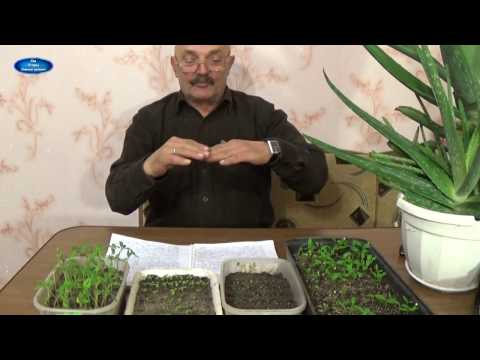

Watch this video on YouTube
Folk remedies
Also, in the fight against a black leg, folk remedies are often used:
- The surface of the substrate and seedlings are treated with an alcohol solution (1 part of vodka to 10 parts of water).
- Moisten the plants and soil mixture twice or three times from a spray bottle with infusion of onion husks. Breaks between treatments - 6 days.
- Reduce watering and dust the surface of the earthen mixture with wood ash.
How to save affected seedlings?
As soon as the first symptoms of a black leg are found on the seedlings, you need to immediately start an active fight against it, otherwise all the plants may die. Many inexperienced gardeners do not know what to do in this case, which drugs are better to use? The first step is to understand that whatever culture is not affected by this dangerous fungal disease, they fight it with the same methods and means. After detecting the first signs of the disease, immediately spill the soil mixture in a container with a weak solution of potassium manganese. Very carefully loosen the surface of the potting mix near the plants, while spilling the root collar. Cover the substrate with a layer of sand, wood ash or egg shells (it is ground into dust). Then the room is thoroughly ventilated, and containers with seedlings are placed as far as possible from each other. If the disease has not yet gained strength and has just begun to develop, then these measures are quite enough in the fight against it. But if the disease is already running, then the affected plants are likely to die.
Plants that are still healthy are transplanted into a new disinfected potting mix as soon as possible (see above for how to treat the substrate). But in the event that you cannot carry out a transplant now, then remove all diseased bushes, and sprinkle the soil mixture on top with a protective layer (described above). Then healthy plants are best sprayed with chemical agents, for example, the substrate and seedlings can be treated with a solution of Fundazole (1–2 grams per 1 liter of water) or Previkur (2 milligrams per 1 liter of water). If you do not want to use chemicals for treatments, then take a biological agent for this, for example: Fitosporin, Bactofit, Planriz or Fitoflavin. You can also use folk remedies. Upon completion of the treatment, they resort to a strong reduction in the frequency of watering, and the soil mixture is moistened only with a pinkish solution of potassium manganese or infusion of onion husks.
If you are growing a rare variety, you can try to rescue the affected seedling. To do this, pinch off the healthy upper part, which should not be lethargic, and root it in water or substrate. Tomatoes are distinguished by their high vitality, so they usually take root very quickly.


Watch this video on YouTube

